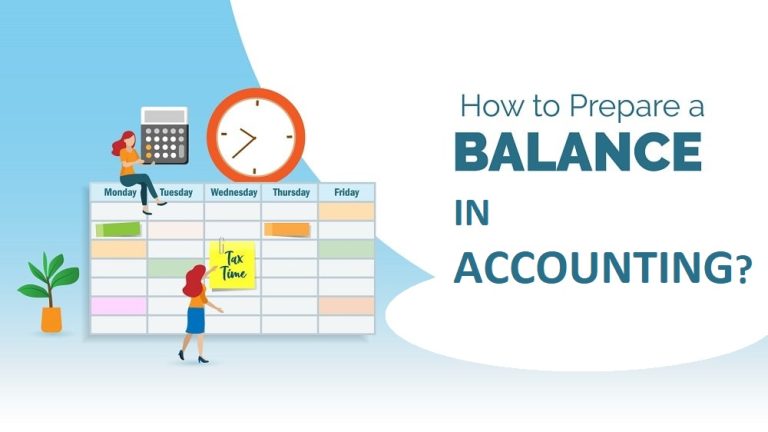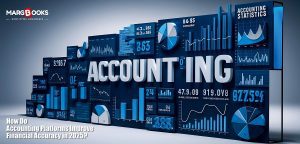As a business owner or an entrepreneur, the biggest mistake you ever can make is not arranging a time to study the financial statements of your company. The worse is not preparing them.
A balance sheet definition in accounting means the most notable financial statements used to identify the financial status of your business. For management, it intimates internal decision-making and for investors and lenders, it provides a quick look into the capability of your company to make revenue and pay off debts.
Either you can prepare this financial statement on your own or hire bookkeepers. Another way is to seek an outside specialist firm by outsourcing the job to hand over the responsibility. Whichever option you choose, you must be familiar with the Balance Sheet Basics.
This article will help you to understand why one should prepare a balance sheet and how it can be prepared easily.
Why should you prepare a balance sheet?
The motive of a Balance Sheet Basics is to know the financial position of a business, specifically to know what it owes and what is owned at the end of the accounting period (after every 12 months). Therefore, a balance sheet is also called a statement of financial position – it gives a snapshot of assets & liabilities at a specific period.
A balance sheet benefits your business in three ways:
1. Offers the basis to evaluate Risks & Returns
By comparing current assets against current liabilities, you may ascertain if you have the required capital to cover short-term debts – wages, lease payments, etc. or if you need more for everyday operations.
2. Essential in securing Loans & Investments
Usually, lenders and investors analyze the balance sheet to know if you’re able to collect payments from clients, pay off debts timely, and manage assets effectively.
3. Shows the long-term sustainability
By evaluating your balance sheet and getting proper financial ratios from it, you can analyze your organization’s position in the context of liquidity, turnover, and productivity. These ratios can also be utilized to compare your range of success against competitors.
Tasks to complete before creating a balance sheet
To prepare a balance sheet or financial statement, you should follow an order and prepare a few things first:
1. Adjust journal entries
Adjusting journal entries is obligatory before creating the basic financial statements, entailing the balance sheet. It refers to updating accounts at the of the accounting period for the items that are not recorded in the journal. For example, suppose you delivered valued Rs. 5000 on the month’s last day but you haven’t received any amount until the next accounting period, then you have to adjust your journal entry. Update your accounts with such entries in the general journal.
2. Record journal transactions in the ledger
Once transactions are adjusted and recorded in the general journal, they need to be transferred to appropriate sub-ledger accounts, like sales, purchase, inventory, cash, accounts receivable, and accounts payable. The process is considered as posting. While a general journal records business transactions on an everyday basis, the general ledger groups these transactions based on their accounts. At the end of the accounting period, the accounts are consolidated into a general ledger. The general ledger performs as a collection of all accounts and is utilized to create the balance sheet and the profit & loss statement.
3. Generate the final trial balance
When you have altered journal entries and uploaded them into the general ledger, create the final trial balance which is a report that compiles general ledger accounts and adds their balances. By generating the trial balance reports, it’s become easier to locate any errors in the overall accounts. The overall debts must be equal to the sum of credits in a trial balance report. If it doesn’t match, it means there is an error you need to track. You may not have recorded a transaction or the calculation is not correct.
4. Create the income statement
An income statement is made before a balance sheet to compute net worth which is necessary to complete a balance sheet. Net profit is the final amount in the bottom line of the income statement, showcasing the P&L of your business. Next, net income is deposited to the retained earnings accounts (left income after paying dividends to share stakes) compiled under the equity field of the balance sheet.
How to solve balance sheet in accounting with a step-by-step guide:
Step 1: Determine the reporting date for the balance sheet
A balance sheet ensures the financial condition of a business at a specific point in time. Thus, the header of a balance sheet always shows a specific reporting date, e.g., 31s December 2023.
Generally, a balance sheet is generated at the financial year’s end date (typically the last day of every March or December), however, it can be prepared quarterly or yearly too.
Step 2: Collect accounts for the balance sheet
Among all the accounts mentioned in the general ledger and trial reports, the balance sheet reflects only permanent accounts, such as cash and fixed assets. Permanent accounts are the accounts whose balances are carried forward to the next period. Recognize such accounts and make a record of their balances.
Step 3: Calculate the total assets
Next, identify accounts from the trial balance that display what you own. In other words, your assets – cash & inventory. Note them on the left side for the asset side of the balance sheet. The asset is classified into two parts – current & non-current. Put the values of each current and non-current asset from the trial balance account, and calculate both current and non-current asset values to get the total of assets.
Step 4: Calculate the total liabilities
Identify accounts in your trial balance that personify what you owe, which means your liabilities, such as accounts payable and loans. Place them on the right side of the balance sheet to create a liability side. Liability is generally classified into two parts – current & non-current liabilities. Enter the value of current and non-current liabilities, and calculate the total of current liabilities and non-current liabilities to calculate the total of liabilities.
Step 5: Arrange Assets & Liabilities
Once the assets and liabilities sections are sorted, arrange them in executive order. Assets must be arranged in liquidity order which means putting those assets items that can be converted into cash on the top and the permanent asset on the bottom. Similarly, put liabilities in discharge ability order putting short-term obligations that are immediately payable in future on the top and long-term and affirmed liabilities at the bottom.
Step 6: Compute shareholders’ equity
Show shareholders’ equity on the right-hand side of the balance sheet, below the section on liabilities. Sharestakers’ equity also refers to the net worth or value of a company if it was abolished or discontinued. It entails investments – capital contributed by investors & owners and the income or the losses in the business. The most common accounts under shareholders’ equity are preferred stock, common stock, retained earnings, and treasury stock.
Common and preferred stocks – Shares issued by a company. Common shares provide voting rights to the owners, but if a company is closed, common shareholders are paid back only after preferred shareholders.
Treasury stock – Shares re-bought from investors to safeguard the firm from a hostile takeover.
Retained earnings – It includes earnings that are reinvested in the business. Calculated by adding net income to previous retained earnings and subtracting distributed profits to investors.
Note – Enumerate the value of all shareholders’ equity components on trial balance accounts, and add them to calculate total liabilities.
Then, calculate the total shareholders’ equity and liabilities by adding the sum from step 4 & step 6. After that, you will have a complete balance sheet. Determines, that both sides of the balance sheet are equal. If not, check the values again.
Conclusion
The balance sheet is prepared at the end of every reporting date to know the financial health of a business. The balance sheet includes assets means what you own and liabilities means what you owe. Every company must prepare a balance sheet at the end of every financial statement to know their net worth.
However, you can install accounting software to prepare your financial statement with increased accuracy. Such software provides its users with live reports on any device, keeping them updated about each transaction and easing the GST billing and filing process. If required, you may rely on Marg Inventory & Accounting software that allows you to generate e-way bills and 100% free e-invoices. Besides, they have completed 31 years in the industry and understand the issues that businesses face and address them adequately. So, what are you waiting for? Call them today!
Also read:
A Guide to Balance Sheet Formats
How to prepare a balance sheet by month summary?
Understanding the Basics of Balance Sheet Structure
How to Manage Finances: A Guide to Balance Sheet Tools
Frequently Asked Questions
What is the balance sheet definition in accounting?
A balance sheet in accounting is a quick snapshot of the financial statements of a business and is prepared on the last date of every reporting date, usually on 31st December or 31st March of every year. The balance sheet is calculated by following the formula:
Assets = Liabilities + Shareholders’ Equity
How balance sheet is calculated?
The balance sheet has the two sides Assets and Liabilities & shareholders’ equity. The asset has two sub-parts – current and non-current assets. Similarly, liabilities also possess two sub-parts – current & non-current liabilities. Assets show what a company owns and liabilities show what a company owes. In the balance sheet, the sum of assets and liabilities must be equal. If not, means there is something wrong and you need to re-check.
How to prepare a balance sheet step-by-step?
A Balance Sheet preparation steps are mentioned below to create a balance sheet:
Step 1: Ensure the reporting date for the balance sheet
Step 2: Collect accounts for the balance sheet
Step 3: Calculate the total assets
Step 4: Calculate the total liabilities
Step 5: Arrange Assets & Liabilities
Step 6: Compute shareholders’ equity
Step 7: Mention shareholders’ equity at the bottom of liabilities
Step 8: Match the total of assets & liabilities, if not equal, you need to check the statement.
Which is the best software to prepare a balance sheet?
There are many software in the country that help in preparing balance sheets and maintaining the whole bookkeeping and Accounting Equation for a company. Usually, the process is automated which eliminates the possibility of errors. One of the best and No. 1 software across the country is Marg ERP which has been in the competition for 31 years and serving businesses to ease their daily operations. With their inventory & accounting software, you also can create 100% Free e-invoices, manage inventory, and accounting bookkeeping smoothly.
How much does cost a software for balance sheet?
The cost of the software for the balance sheet depends on its features and functions. The best one is that is available at a reasonable price with the latest features. Marg ERP is one of them that offers automated and robust features to ease the accounting of business that users can track 24/7 and be updated. For more details, you can connect with them by visiting their website https://margcompusoft.com/marg-price-list.html




